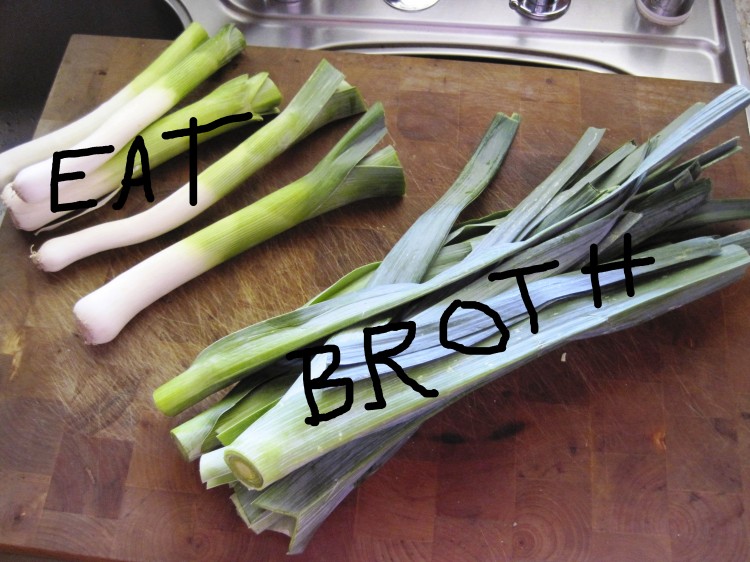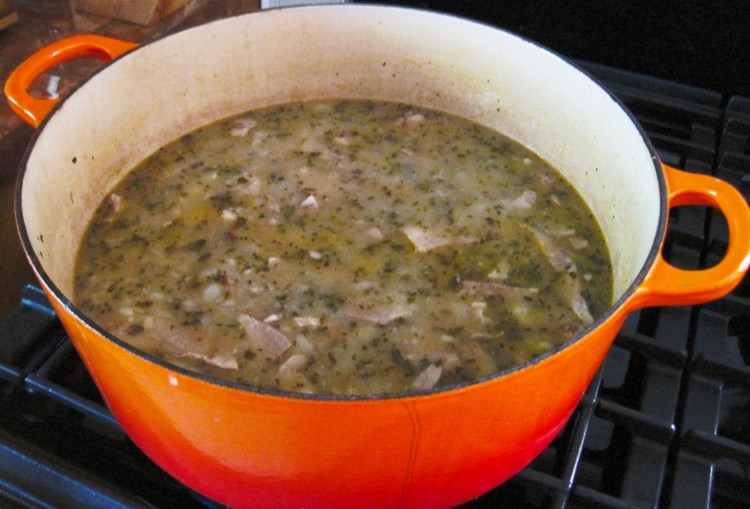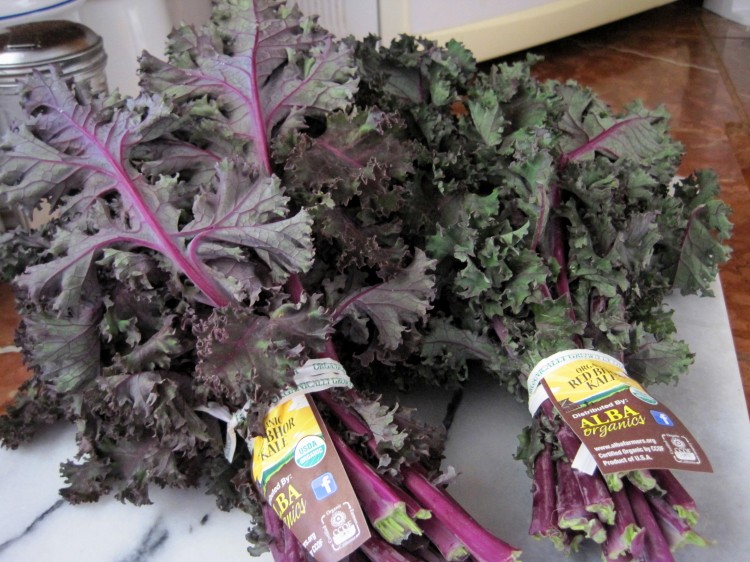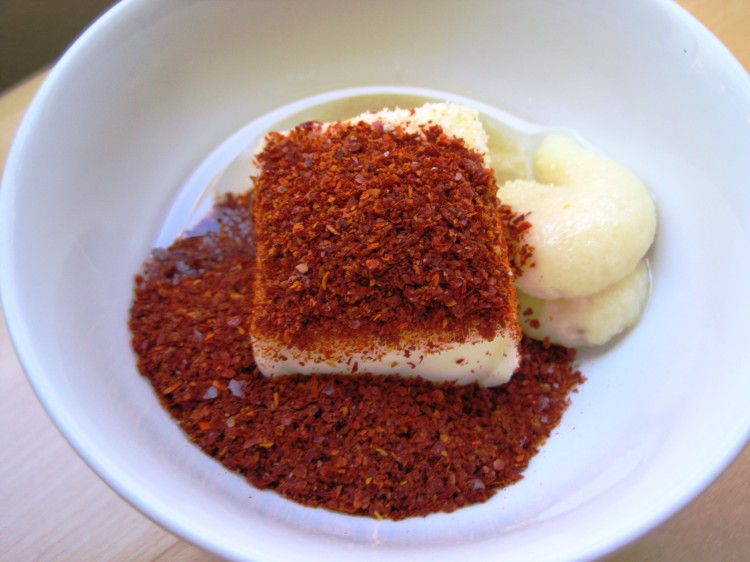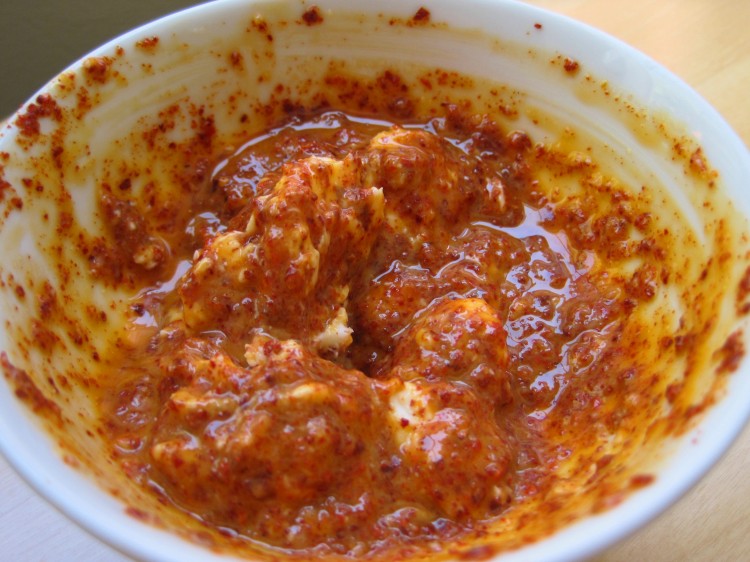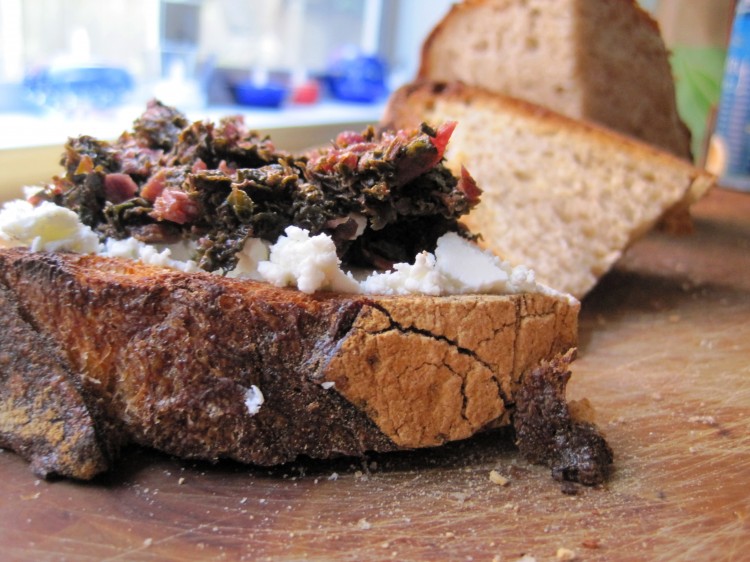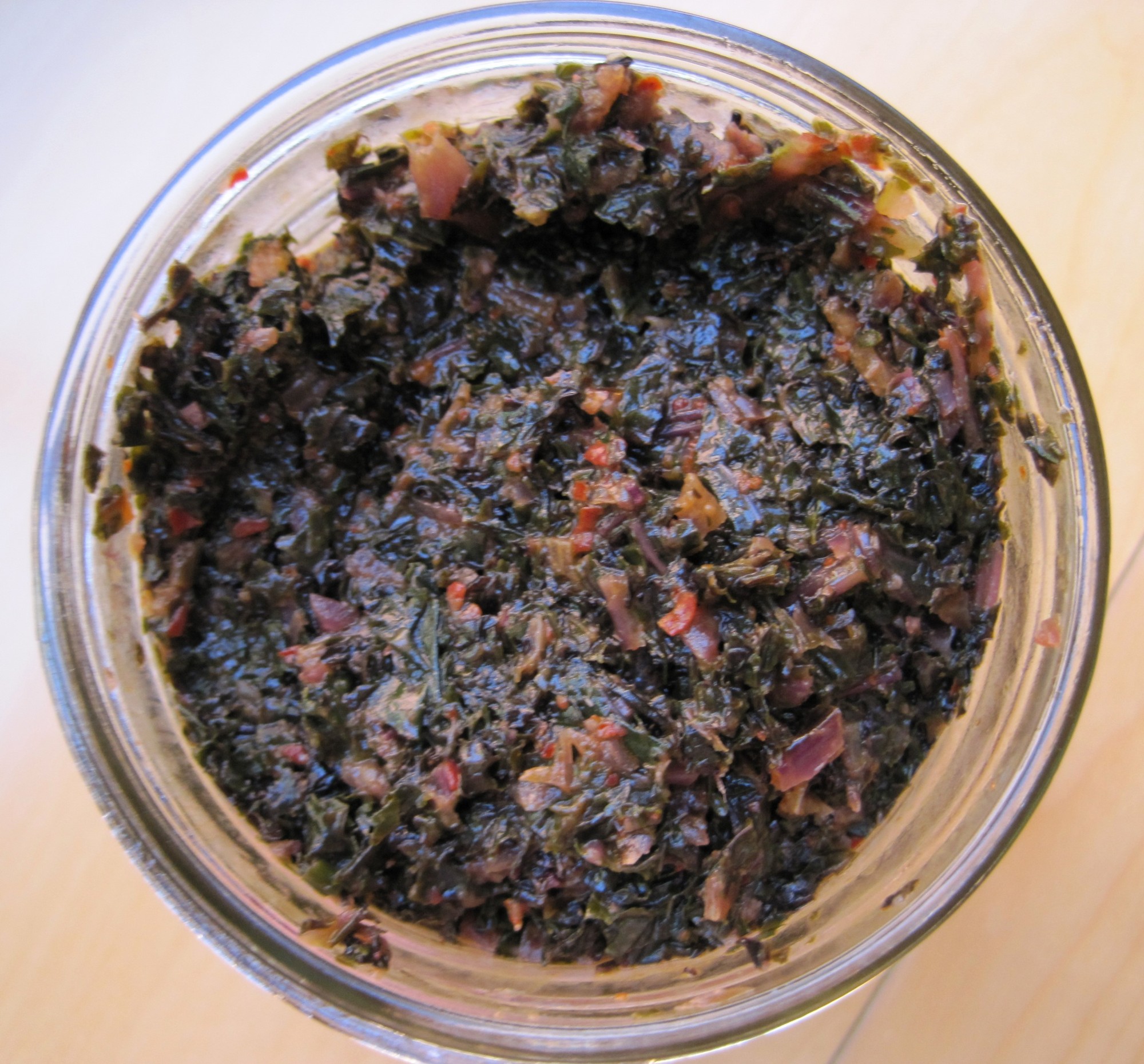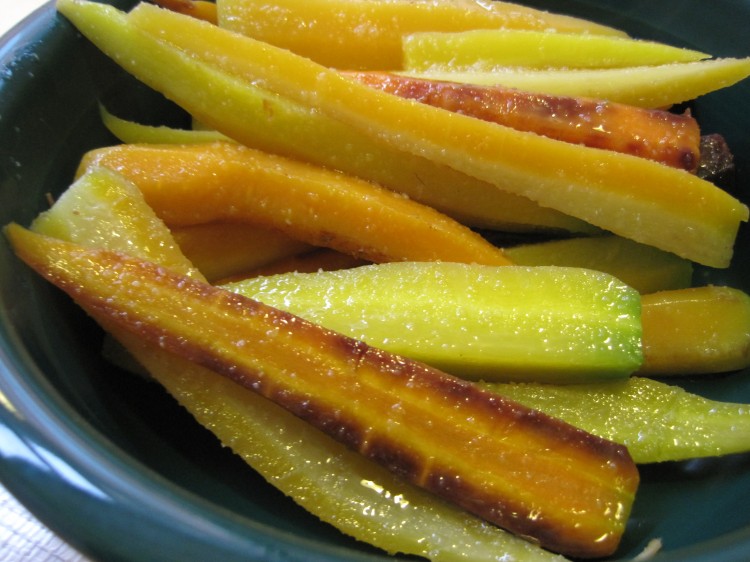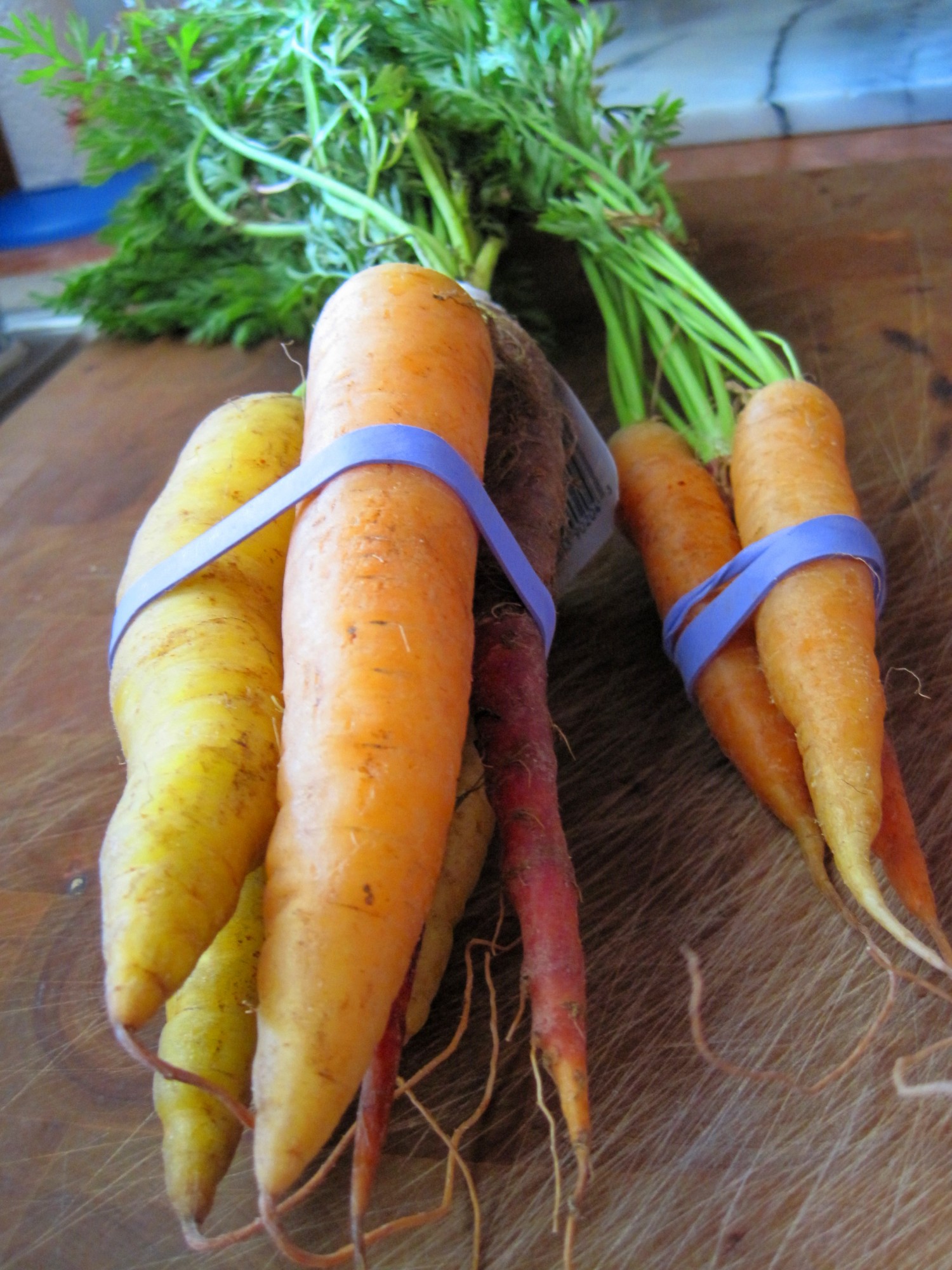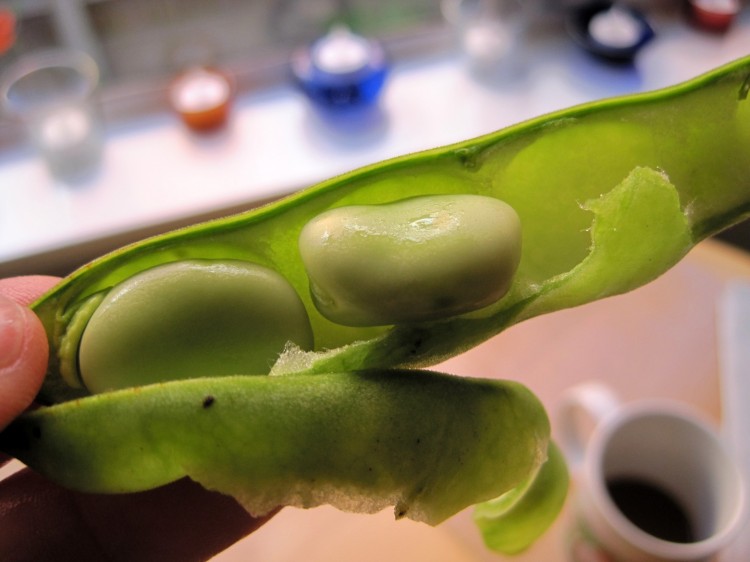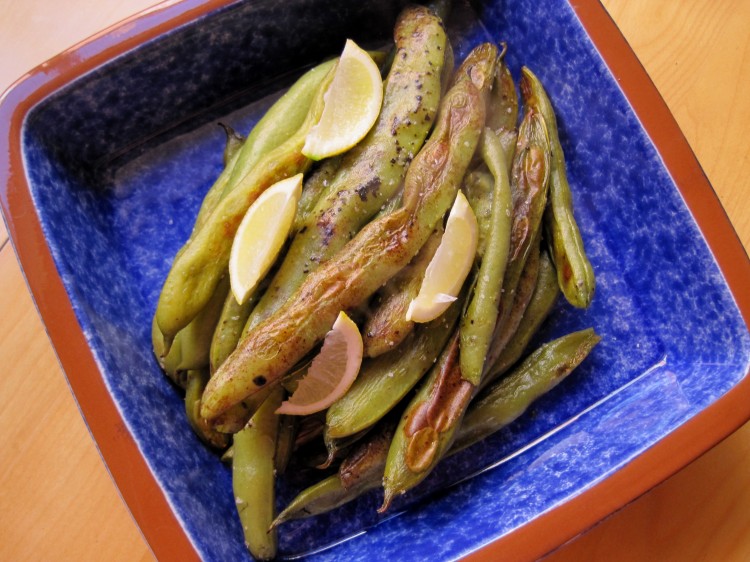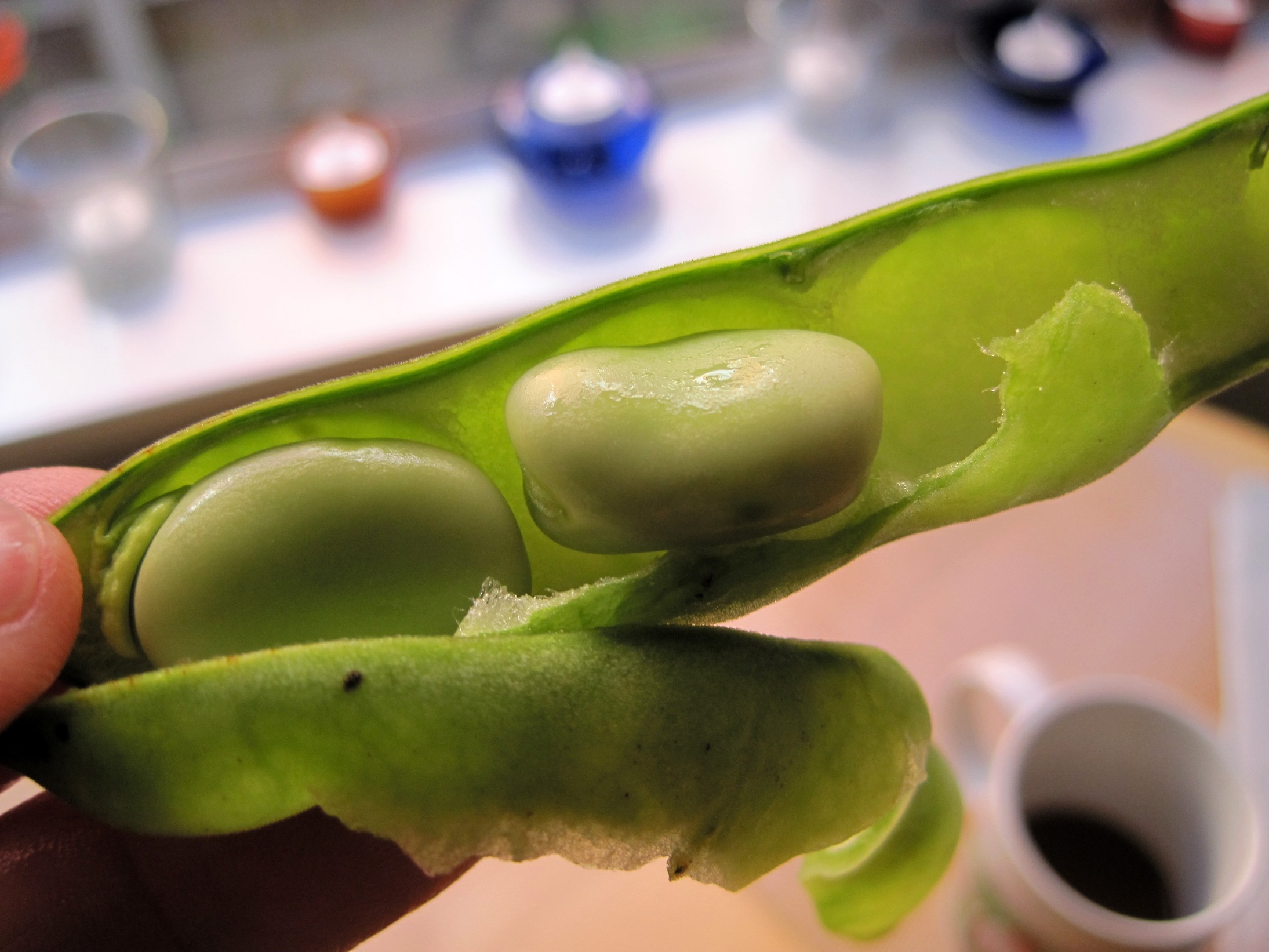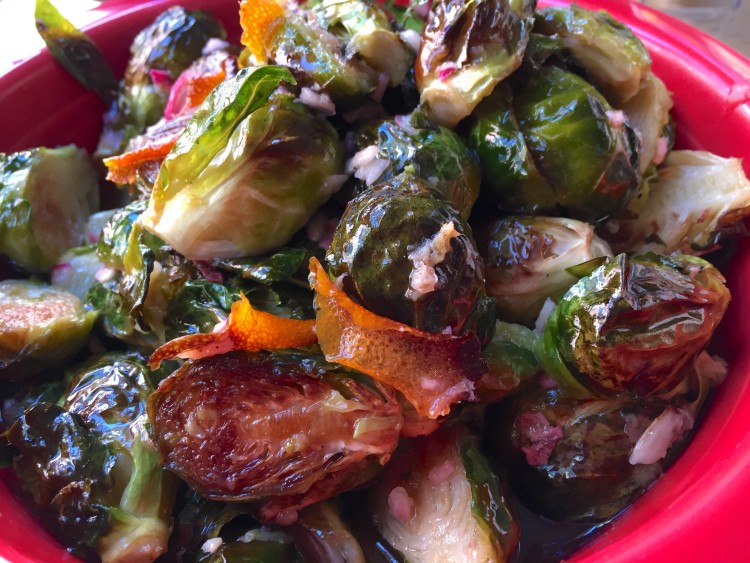
Brussels sprouts with blood orange vinaigrette
I’m back at the blog. After a long break. I apologize. I had a very good reason, trust me.
It’s Easter! The weather is great in the Bay Area, I got up early to feed my colony of puddytats in Richmond, the boys are watching the Mets and I’m waiting for Brussels sprouts to roast. We’re also having a cauliflower-potato mash and roast duck. Matthew, the pescatarian, is having shrimp scampi. The four monsters — Puff, Cleo, Nibbles and Tiger — are having tuna.
I haven’t looked at the blog for quite some time, and I decided yesterday that although I hate the theme I’m using I will leave it as-is for now. This is my favorite place to write because I can say what I want, when I want. There’s no focus and I don’t have to worry about much of anything. The point being that once I get into the whole design thing, which is what I’m doing with my new sites, I’ll become obsessed with perfection and lose sight of what this is all about here. I’m my own worst enemy that way.
So — Easter! A holiday I love because we keep it just to the four of us, so there’s no rush or need to have the house in any kind of real order. Not that it ever is, but I’m talking degrees.
The bummer is that I forgot to go to See’s to get candy. When Matt went today it was closed, so we are reduced to having Trader Joe’s peanut butter cups. Also, I miscalculated on the ice cream. I like to make ice cream sandwiches using chocolate chip cookies, and I then roll the sides in chips, wrap and freeze. I didn’t get the ice cream at Costco, where I got the duck, which, by the way, happens to be Maple Leaf Farms and only $15, because it would have stood in the way of my eating a package of poke in the hot dog area. Yes, Costco has really good poke. If you’ve never had it, it’s Hawaiian raw fish salad. Poke is a big thing in Cali now. Lots of good poke places around, which makes me very happy.
Back to the ice cream problem. My Grocery Outlet always has a boatload of high-end, low-overrun organic ice cream in myriad flavors. Except yesterday, of course, when they had a dreadful selection, like a million pints of Hostess Sno Balls flavor. I dug out a couple of pints of chocolate peanut butter swirl So Delicious soy-based ‘scream amid all the horrors and figured it’d pass. Matthew nevertheless thought it wise to get some vanilla at TJ, but the Humboldt organic they usually carry was out, so he came home with a quart of TJ-brand coffee-flavored. I don’t like the Trader Joe’s store brand of ice cream. It has an odd mouthfeel. I prefer their soy ice cream, which is the logic I used at Grocery Outlet when I went with the So Delicious. I won’t be making the cookie sandwiches, though. You need fabulous vanilla ice cream for those, no question.
Anywho, I need to go deal with the duck, so I hope you have a great day today whatever you’re doing, and here’s the recipe for the Brussels sprouts. It’s simple but delicious. Works well for Christmas or Thanksgiving, too.
- 2 pounds Brussels sprouts, trimmed and cut lengthwise
- 2 blood oranges
- Sunflower oil (for roasting)
- Hazelnut or roasted sunflower oil (can sub a mix of peanut and regular sunflower oils)
- Dried shallots (can sub dried onion)
- Lemon juice (need only a splash)
- Sugar (need only a little)
- Salt & pepper
- Remove the rind from the blood oranges in strips with a vegetable peeler.
- Squeeze the juice out of the blood oranges into a large bowl.
- Add hazelnut oil. A few tablespoons should be fine.
- Add a splash of lemon juice, a tablespoon of sugar and a little salt and pepper.
- Add a good tablespoon of the dried shallots.
- Whisk, taste and correct seasonings to your liking. The dressing should be bright and toasty with a hint of sweetness. If too thin, add oil.
- Let the dressing bloom at room temperature while you roast the sprouts.
- Oil a sheet pan generously with sunflower oil and sprinkle on some salt.
- Lay the sprouts cut side down and then scatter a little more oil and salt on top.
- Scatter the blood orange peel on top of the sprouts.
- Roast in a 375 degree F. oven for 20 minutes or so, depending. You don't want them too soft.
- Allow to cool for 5 minutes and then transfer the sprouts gently to the bowl with the dressing and turn with a spoon every now and then until they're warm or at room temperature and serve.
- Top with fried onions, first, if you like

